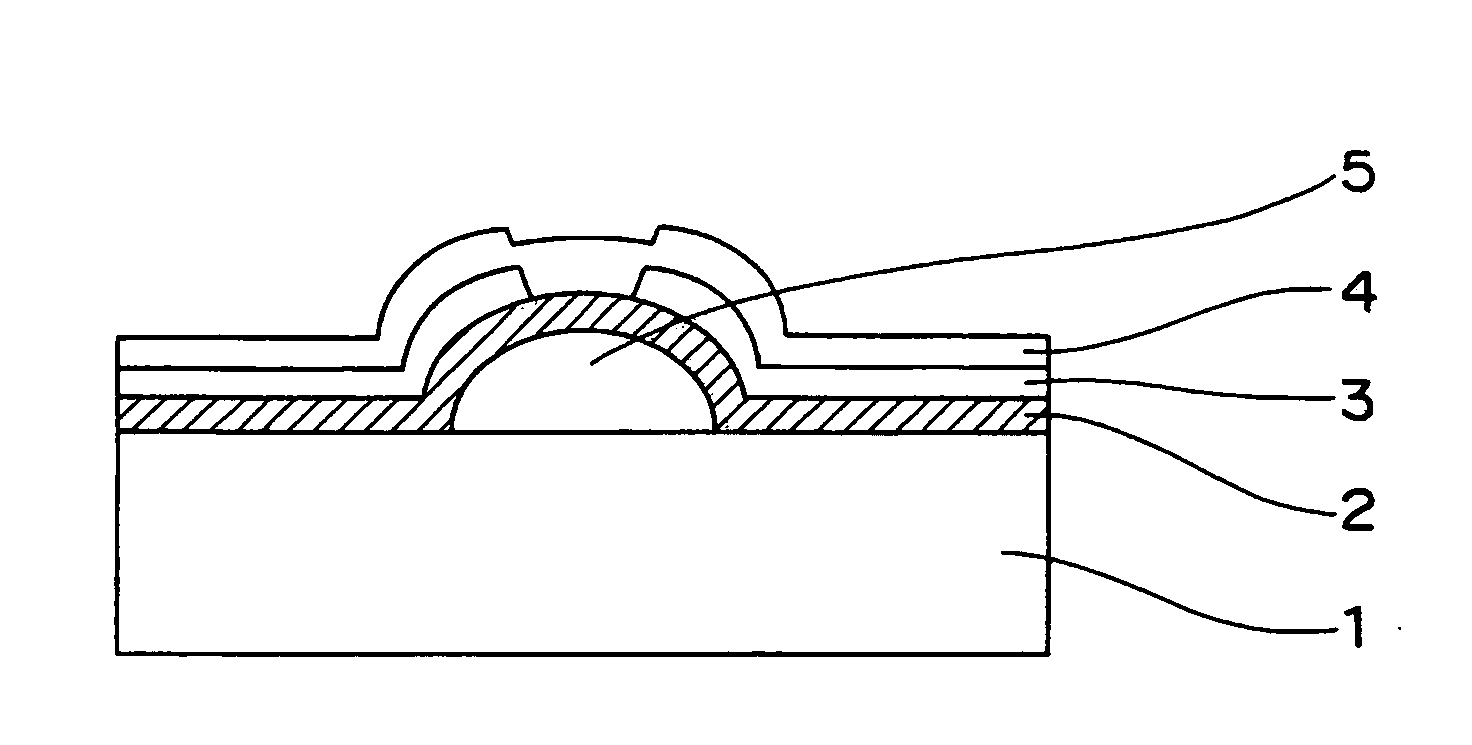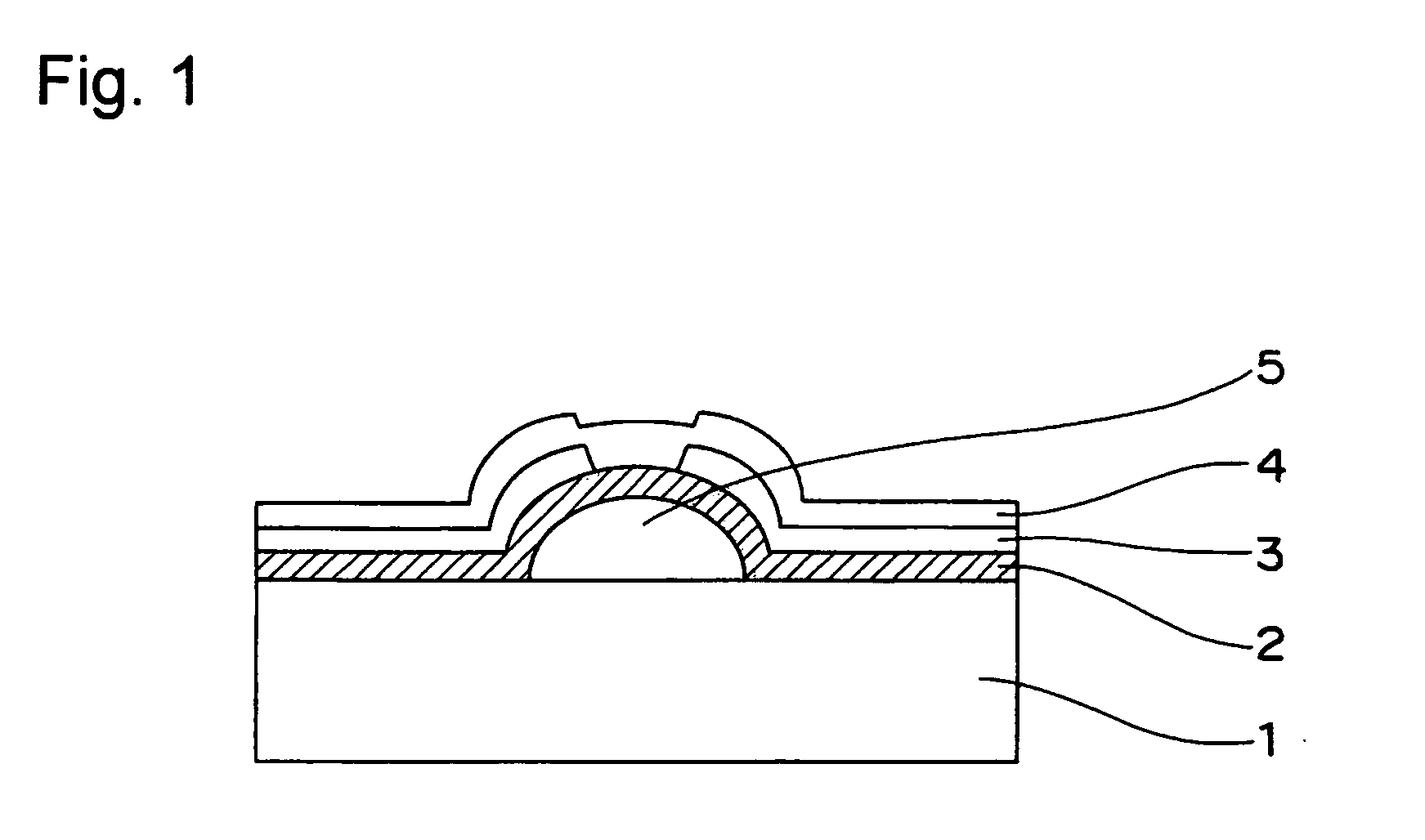Thermal Transfer Sheet
a technology of thermal head and thermal head, applied in thermography, printing, duplicating/marking methods, etc., can solve the problems of deterioration in method does not improve the release efficiency of thermal head is not sufficient, so as to achieve the effect of reducing the slipping efficiency of thermal head, facilitating the deposition of foreign matter, and insufficient release efficiency
- Summary
- Abstract
- Description
- Claims
- Application Information
AI Technical Summary
Benefits of technology
Problems solved by technology
Method used
Image
Examples
example 1
[0051]The following materials are dispersed respectively in a mixed solvent of ethanol and toluene at a ratio of 1:1 (mass ratio) to contain a solid content of 10%, and the mixture was stirred and dispersed in a paint shaker for 3 hours, to give a back layer ink. The ink was applied on one face of a polyester film (4.5 μm, Lumirror, manufactured by Toray Industries, Inc.) by using a wire bar coater, to gibe a thickness of 0.5 g / m2 after drying, and dried in an oven at 80° C. for 1 minute. Thus, a back layer was formed.
[0052](Materials for Back Layer)
Polyamide-imide resin (HR-15ET, Toyobo Co., Ltd.) 50 parts
Polyamide-imide silicone resin (HR-14ET, Toyobo Co., Ltd.) 50 parts
Silicone oil (X-22-173DX, Shin-Etsu Chemical Co., Ltd.) 5 parts
Zinc stearyl phosphate (LBT-1830 purified, Sakai Chemical Industry Co., Ltd.) 10 parts
Zinc stearate (GF-200, NOF corporation.) 10 parts
Polyester resin (Vylon 220, Toyobo Co., Ltd.) 3 parts
Inorganic filler (talc, average particle size: 4.2 μm,
Mohs' hardn...
examples 2 to 9
[0054]Thermal transfer sheets were prepared in a manner similar to Example 1, except that the silicone oil (X-22-173DX, Shin-Etsu Chemical Co., Ltd.) used in Example 1 was replaced with the silicone oil shown in the following Table 1.
TABLE 1ViscosityThermal-Thermal-Printed-Printed-ProductKindModification25° C.headheadimageimageNumbernameManufacturer(modification type)positionmm2 / sabrasionstainingstainingwrinklingExample1X-22-173DXShin-EtsuEpoxy modifiedOne terminal65◯◯◯◯Example2X-22-163AChemicalEpoxy groupBoth terminals30◯◯◯◯Example3X-22-163BCo., Ltd.Epoxy groupBoth terminals60◯◯◯◯Example4X-22-163CEpoxy groupBoth terminals120◯◯◯◯Example5KF-6003Carbinol modifiedBoth terminals110◯◯◯◯Example6X-22-1821Phenol modifiedBoth terminals100◯◯◯◯Example7X-22-2000Epoxy modifiedSide chain190◯◯◯◯Example8X-22-174DXMethacryl modifiedOne terminal60◯◯◯◯Example9X-22-4952Polyether modifiedBoth terminals90◯◯◯◯
example 10
[0055]A thermal transfer sheet was prepared in a manner similar to Example 1, except that the materials for the back layer on the thermal transfer sheet prepared in Example 1 were replaced with the following compounds.
[0056](Back Layer Materials)
Polyamide-imide resin (HR-15ET, Toyobo Co., Ltd.) 50 parts
Polyamide-imide silicone resin (HR-14ET, Toyobo Co., Ltd.) 50 parts
Silicone oil (KF965-100, Shin-Etsu Chemical Co., Ltd.), 5 parts
Zinc stearyl phosphate (LBT-1830 purified, Sakai Chemical Industry Co., Ltd.) 10 parts
Zinc stearate (GF-200, NOF corporation.) 10 parts
Polyester resin (Vylon 220, Toyobo Co., Ltd.) 3 parts
Inorganic filler (talc, average particle size: 4.2 μm,
Mohs' hardness: 3) 10 parts
PUM
| Property | Measurement | Unit |
|---|---|---|
| Tg | aaaaa | aaaaa |
| particle size | aaaaa | aaaaa |
| thickness | aaaaa | aaaaa |
Abstract
Description
Claims
Application Information
 Login to View More
Login to View More - R&D
- Intellectual Property
- Life Sciences
- Materials
- Tech Scout
- Unparalleled Data Quality
- Higher Quality Content
- 60% Fewer Hallucinations
Browse by: Latest US Patents, China's latest patents, Technical Efficacy Thesaurus, Application Domain, Technology Topic, Popular Technical Reports.
© 2025 PatSnap. All rights reserved.Legal|Privacy policy|Modern Slavery Act Transparency Statement|Sitemap|About US| Contact US: help@patsnap.com



